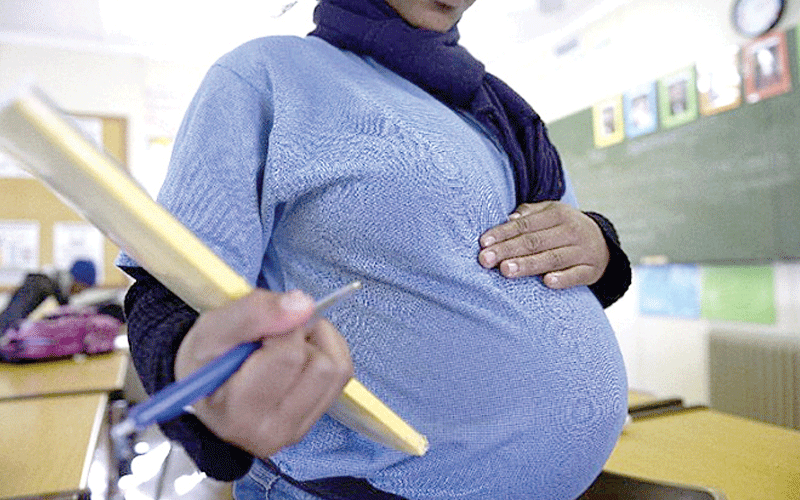Women with disabilities face triple threats in delivery room

Like many women, Diana Mwikali, a former employee of Machakos County government’s dream growing up was to one day hold a baby of her own when the right time came.
Finally, that time came early this year in February, and with full of expectations for a healthy and bouncing baby, she walked into a hospital to give birth after nine months of waiting.
“Mwikali was so excited that time had come when she would finally hold her son in her hands. She was prepared mentally, psychologically and in all other aspects to be a mother,” reveals her longtime friend Belinda Adhiambo.
Adhiambo says Mwikali had been living with disability and had always been praying that one day she would have a baby of her own and when she learnt about the pregnancy, it was like a dream come true.
Mwikali had Disproportionate Short Stature (commonly referred to as dwarfism), which is caused by impaired growth of the bones and cartilage in the body.
The disability causes changes to the limbs, back, and head size that could cause complications, such as back pain or breathing difficulties due to hunched or swayed back, bowed legs, weight gain that may cause back pain, crowded teeth, delayed motor skills development, frequent ear infections and possibly hearing loss, hydrocephalus (fluid on the brain), pressure on the spine at the base of the skull, sleep apnea, among others.
Debunk misconceptions
Her desire to have a child was fueled by perceptions that women with disabilities, especially her form of disability, could not conceive and part of her wanted to debunk this misconception.
Also, the majority of friends in her circle had gotten pregnant and successfully delivered and this was an assurance to her that it was possible for her too to bring a life to the world.
However, her dream was cut short by the cruel hand of death, adding her name to the maternal-related deaths.
Adhiambo says at week 36 of the pregnancy, Mwikali’s doctor put her on a bed rest and instructed her not to strain herself. “This warning was a clear show that something was amiss with her and I feel that they should have informed her so she could make a choice of undergoing early delivery, which would have saved her life,” she laments.
When she went into labour, Mwikali was rushed into theatre, where she lost her life while giving birth. She never even got to see her baby’s face.
Adhiambo says Mwikali’s life could have been saved if the health workers who handled her had a knowledge on managing delivery of a person with her form of disability and given her the option of going for an early delivery.
Mwikali’s death exposes the deep-rooted challenges women with disabilities face while seeking maternal health services in Kenya.
Miriam Wawira, a mother of one lived to tell the tale of how she narrowly escaped the jaws of death during delivery of her now 10-year-old son.
She has congenital phocomelia disability, which refers to someone who does not have hands.
When she got pregnant, she thought her journey would be smooth like any other person despite her disability, but that was not the case.
Wawira says her first challenge began while seeking antenatal care and most of the hospitals sent her away or referred her to other hospitals because of what she believes was the fear of handling her due to the impact the disability may cause to her disability. “I do not have hands and I am short, which means, I had irrregular blood pressure, my chest was compressed and my pelvis was too short to properly carry a pregnancy. Now, with the pregnancy, most doctors were either scared due to lack of skills to attend to me or just discriminated against me,” she recounts.
Eventually, she found a specialist doctor at the Kenyatta National Hospital (KNH), but she always had to queue for long hours or book to have appointments with him. “At the hospital, they treat us with a lot of contempt. They expect us to act like someone without a disability, but it is impossible,” she notes.
Ideally, with her form of disability, there will be need for someone to assist her to remove her clothes or accompanying her throughout the process.
But that was not the case as she had to throw away her dignity and seek assistance from male doctors or nurses attending to her. “Just imagine a male doctor having to remove my dress or trousers and the awkward moments that follow after that,” she says.
For the nine months of pregnancy, Wawira had to endure pain and other complications that come with pregnancy, which she gladly overcame with her sight set on the end goal.
As her due date neared, she realised the task that lay ahead of her and indeed, it was an uphill task that almost cost her life.
While she acknowledges that the pain of delivery is unbearable for physically fit women, she describes the situation as worse for women with a disability.
First, she went to a hospital that was closer to where she lived, but the doctors anticipated challenges in aiding her delivery, and referred her to KNH where she successfully gave birth to her son although with difficulties.
At the hospital, recommended that she delivers her baby via Cesarean delivery (C-section) , as the shape of their pelvis made vaginal delivery too difficult. “The long hours at the theatre room and later having to stay at the hospital without any of my family members around to assist me was so difficult, but my son being alive numbed all the pain,” she notes.
A gamble
Even though Wawira survived the ordeal, the number of Women with disabilities (WWDs) losing their lives while giving birth has stung fear among their peers. “I still hope to have a second baby, but the fear of whether I will survive or lose my life is what is holding me back. But time will tell on this dream,” she says.
Deaths and horror stories of women with disabilities on their experience at the delivery room lifts a lid on inclusivity when it comes to their reproductive health.
A study by three Netherlands Universities showed 10 per cent of women with disabilities are of child bearing age, but cannot do so, because of the challenges they face during pregnancy and childbirth, such as physical and informational barriers, problems with communication and the attitude of health services providers.
The study unwrapped evidence of how women with disabilities continue to encounter barriers in accessing maternity care related due to inaccessible care settings, lack of knowledge and the attitude of healthcare providers.
The study shows how the problem of equality when it comes to reproductive health of WWDs is not confined to developing countries, but also affects developed countries. “It is sad that at this day and age, we are losing women with disabilities while giving birth yet they have equal rights to quality treatment no matter their race, status or abilities,” says Dr Isaac Okeyo.
Dr Okeyo says there is always a form of discrimination towards WWDs seeking reproductive health services and there are always misjudgments or misconceptions when they get pregnant. “Some people believe WWD cannot get pregnant willingly unless they are raped. This is a wrong perception, because they are getting married and getting babies, just like other woman,” he notes.
Okeyo says any woman with a womb has the ability to carry a pregnancy to a certain stage depending on their disability.
He, however, says most of the hospitals in Kenya, especially those of lower levels are neither WWD friendly nor have equipment or human resource to handle such cases.
The situation might be dire in rural areas where health facilities are miles away and lack basic disability friendly facilities.
He says WWDs need to have a specialist doctor and a gynecologist walk with them throughout their pregnancy journey, to help in assessing their progress.
“The two doctors will help in identifying risk factors and decide whether the mother should wait for 40 weeks to elapse or undergo a surgery before the end of the pregnancy term,” he says.
Depending on the type of disability, WWDs can give birth naturally or through a Caesarean section.
Some of the factors that put pregnant women at risk and forces WWDs to undergo emergency CS, include hypertension, diabetes, heart conditions, which may worsen during pregnancy, lower body weight, obesity among other health conditions. Failure to that might result in death of the mother or child and in some instances both.
Dr Okeyo says some WWDs, especially those with short stature of below 155 centimetres are also at risk of having challenges during pregnancy and will require special attention to identify the problem in advance.
For the physically challenged women, they are at a risk of facing obstructed labour if their pelvic has deformity and, therefore, should not be allowed to go into labour.
Also, respiratory deformity caused by chest deformity may worsen and they may need adequate oxygen during birth and, therefore, a C-section or vacuum delivery is the safest option of preserving the lives of both mother and child.
Other forms of disabilities that may cause challenges during pregnancy and delivery, include disabilities that touch the spinal cord, kyphosis (a condition where the spine curves at a certain angle and forms a hump at the back) and muscles caused disabilities.
Adhiambo, an amputee and also a mother of one, also agrees that there is need to dignify reproductive health services for WWDs.
“Both levels of government need to sensitise health workers on how to handle special cases. Disability friendly facilities, does not mean only putting up ramps in buildings, but how we are received from the reception, have people who can assist us in communicating or using these facilities,” she says.
Adhiambo’s sentiments are echoed by Dr Okeyo who says hospitals should mainstream departments whose focus will be on PWD and, especially the women.
Alternatively, Dr Okeyo says the hospitals should have disability-skilled health workers, such as a sign language interpreters who will assist anytime a person with hearing impairment walks into the facility.
There have been suggestions that disability friendly knowledge be introduced in the medical school curriculum.











